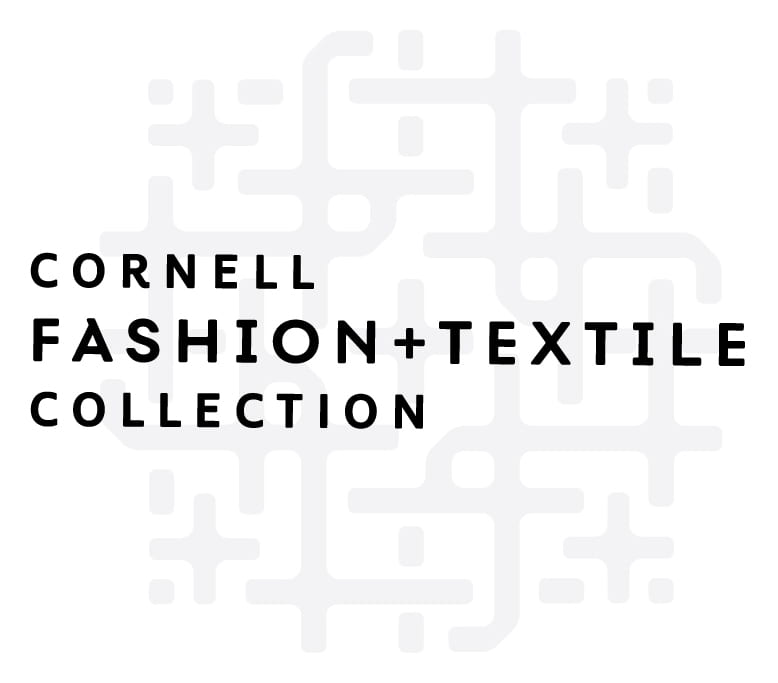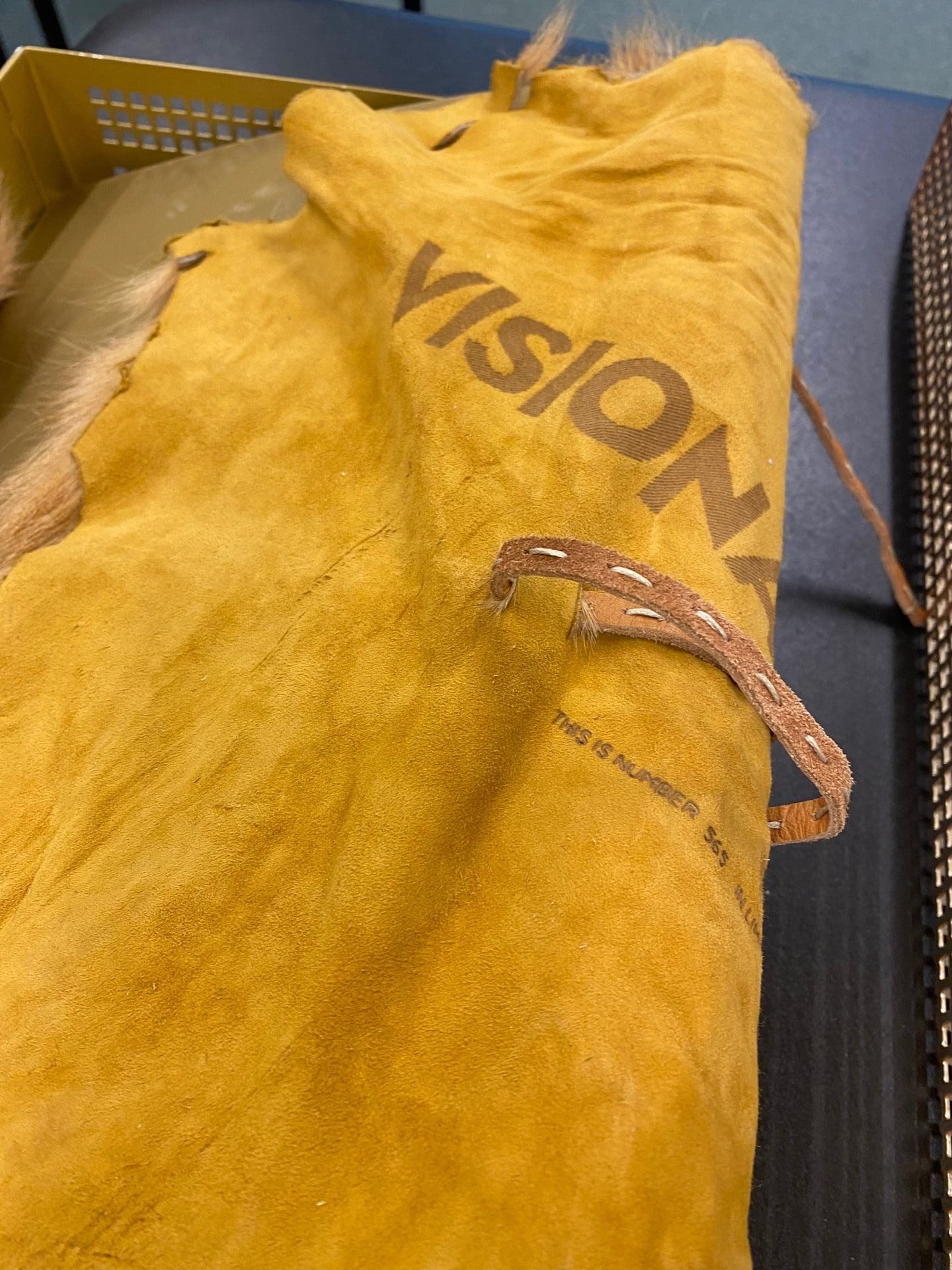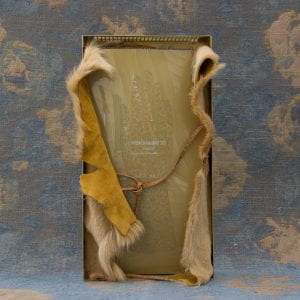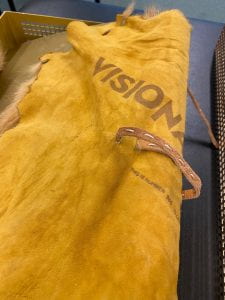This online blog post features materials protected by the Fair Use guidelines of Section 107 of the US Copyright Act. All rights reserved to the copyright owners.
Blog post by Nadine El Nesr
Not just for the art magazine connoisseurs, but writers, editors, designers, historians, conceptualists, and virtually any person from any profession can experience and learn from the work of Visionaire.
Seemingly niche, but covering a wide range of disciplines, Visionarie draws focus from film, immersive and interactive experiences, branded content, public art installations and blurs those lines through the lens of fashion, art, and contemporary culture (“About,” n.d.). brewing the perfect recipe for full entertainment and play for their consumers.
These magazines are not confined to traditional gloss coated matte covers and pages but can come in boxes, cages or cases. One of the most compelling which I have had the opportunity to get my hands on at the Division of Rare and Manuscript Collections in Olin Library at Cornell University was Visionaire 33 Touch (see Figures 1 – 4). Published in 2003 in collaboration with Fendi, 33 Touch comes in a gold brushed gridded sliding metal box, with its pages wrapped in a wearable pony-skin cache-col. Each of the 20 loose papers explores its own unique element of touch through various interpretations of the Fendi fall winter 2000-2001 collection, complimenting the season’s theme of sensory overload and excess that are still relevant decades later. The discourse of excess and overload are delicately intertwined with luxury, and the most famous of these emblems of luxury is the multinational company LVMH which acquired ownership stakes in Fendi in July 2000 (“LVMH: A Timeline,” 2021”).
Visionarie’s tactful collaboration with longtime contributor François Berthoud allows for the opportunity to insert luxury into controlled circulation in the form of a conceptual magazine. Although one of the most expensive magazines on the market as seen on the Visionaire website, with prices running upwards of thousands of dollars retail, the magazine tells a story and gives access to contemporary signs and objects by recourse to a device that recalls metonymy (Calefato, 2014, p.11). For example, the gold pages, box, and colors throughout evoke this precious metal, and the additions of fur in garment representations cite the obscure splendor of textures and luxurious furs. The logo and branding of Fendi is apparent throughout and imbues value and exclusiveness through words and symbols. This elicits a sense of rhythm and unity throughout the magazine as there is consistency within and plays on the repetition of Fendi’s famous logo. From another perspective, luxury takes a sort of gamble to lower itself to the level of controlled consumption, although conspicuous consumption, to reach the hands of those who are imaginative in connecting themselves as a part of the elite by owning and occasionally collecting small accessories, collaborations, accent pieces, or branded product by a big luxe designer (Calefato, 2014, p.11). Patrizia Calefato (2014) posits this idea by stating,
“The logic of a downward-looking luxury also includes the choice of some automobile brands to produce relatively accessible models. The aura of hypothetical luxuriousness for the many also accompanies the way in which luxury is rendered in discourse through journalism and new forms of communication. Many magazines… have come to focus on luxury consumption for both men and women, becoming glossier and more refined in terms of style and subject matter” (p. 12).
Author bio: I’m a student at Cornell University in the College of Human Ecology studying fashion design management with a track in product development. I’m passionate about exploring fashion’s deeper connections to history, psychology, art, luxury, fitness, and the human experience. In my free time you can find me designing, painting, reading, in the gym, or outdoors!
Works Cited
“About.” VISIONAIREWORLD, https://visionaireworld.com/pages/about.
Calefato, Patrizia. Luxury: Fashion, Lifestyle and Excess. Berg, 2014.
Manchester, Elizabeth. “’Insertions into Ideological Circuits: Coca-Cola Project’, Cildo Meireles, 1970.” Tate, Sept. 2006, https://www.tate.org.uk/art/artworks/meireles-insertions-into-ideological-circuits-coca-cola-project-t12328.
TFL. “LVMH: A Timeline behind the Building of the World’s Most Valuable Luxury Goods Conglomerate.” The Fashion Law, 5 Oct. 2021, https://www.thefashionlaw.com/lvmh-a-timeline-behind-the-building-of-a-conglomerate/#:~:text=2001%3A%20Fendi%20%E2%80%93%20The%20Italian%20company,acquired%20ownership%20stakes%20in%20Fendi.
https://cornell.app.box.com/s/7v4i7rigrzwaq4c4p5thzc2po6w4f2t7




